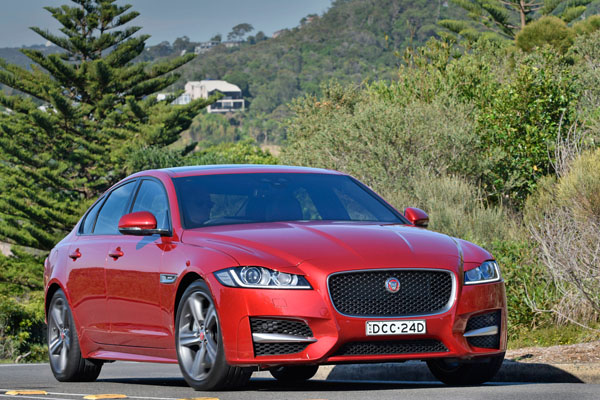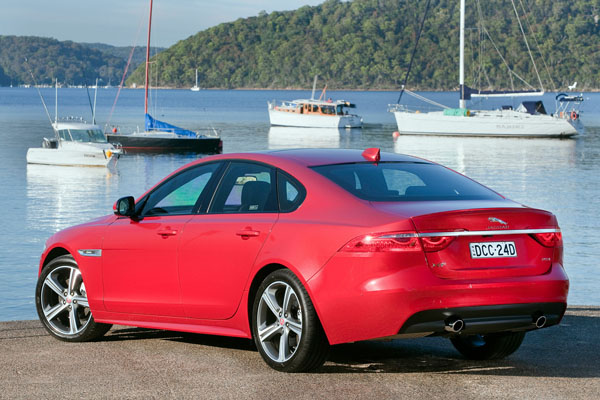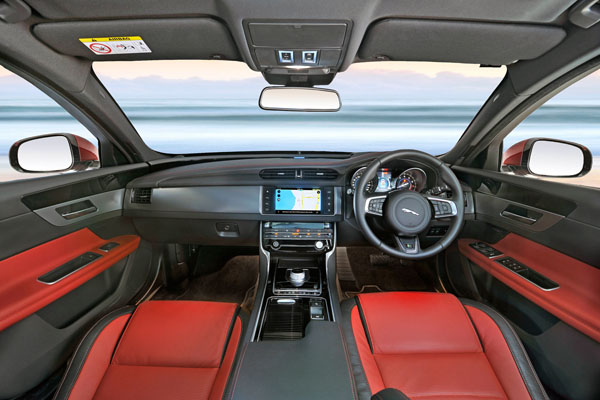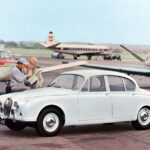
Automotive retro styling is a tricky business; it has worked well for BMW with the Mini, Fiat’s 500 and VW New Beetle. Yet Jaguar couldn’t make a success of the retro route in its XJ models, despite having a long tradition in styling.
The Brits took the apparently correct decision to give its previous generation XJ series high-tech mechanical components under a superbly engineered aluminium skin – which was styled in the retro manner. It didn’t work, so the famed Jaguar designer, Scotsman Ian Callum gave us an all-new, almost controversial, shape with the Jaguar XF.
Callum’s styling theme was later followed by the larger XJ and recently by the smaller XE and has been well received by buyers. However, changes to buyers’ acceptance can take time and the Australian Jaguar importer was intrigued to find that sales of the XF in the latest 12 months exceeded those of the introductory 12 months in 2009, exactly the opposite of the normal graphs that start with a bang and taper right off at the end.
Time flies and the second edition of the image-breaking Jaguar XF has just been released downunder. It comes as no surprise that it has a solid resemblance to the successful model it supersedes. The distinctive new-generation Jaguar grille is almost upright and flanks reasonably large headlights, with large foglight grilles beneath them. The profile is long, low and sleek to follow the longtime Jaguar theme and finishes off with a fastback rear end.
Jaguar XF has two infotainment systems. The standard one is InControl Touch and uses an 8.0-inch touchscreen. It supports gestures such as those used on smartphones and tablets – ‘swipe’ and ‘drag’, as well as voice recognition control.
Jaguars InControl Touch Pro has a 10.2-inch touchscreen. As with a smartphone, the home screen can be customised, wallpaper can be set to any image, and widgets can be added to provide shortcuts. InControl Touch Pro also supports the latest generation of Jaguar’s amazing Dual View technology and has a 100 per cent increase in screen pixel count.
We loved the audio output from the optional of a 17-speaker, 825-Watt digital surround sound system developed by Meridian in conjunction with Jaguar.
Power is provided by a choice of four-cylinder turbo-petrol and turbo-diesel engines, both with capacities of 2.0 litres. Or a pair of V6 engines, one a 3.0-litre turbo-diesel the other a supercharged petrol, again displacing 3.0 litres.
We spent time with all four engines over two-day, 500+ km routes in the Yarra Valley area in Victoria chosen by Jaguar Australia. Ideal conditions, with tight, winding roads; fast flowing bends; and some motorway running.
It probably comes as no surprise that the supercharged petrol was our favourite unit. Its silky smoothness and fast throttle response made light work of hills and for short distances on the wrong side of the road when overtaking.
All engines sit in front of an eight-speed automatic transmission. It works brilliantly with then engine’s computer, providing fast smooth changes and generally reading the driver’s mind as to the correct ratio.
While Jaguar tells us the XF is aimed at a slightly more mature owner than the smaller XE we find it just as enjoyable to punt hard. The EPAS (Electric Power Assisted Steering) in the new XF is still as we described after driving the XE – the best in the business as far as feel and accuracy is concerned.
You can feel the added weight in the front of the two V6 models, but probably only if you have just stepped into a V6 fresh from the four-cylinder.
Road grip is excellent, with huge margins of safety and generally unobtrusive electronic assistance should you mistakenly enter a bend at a far higher speed than intended.
Ride leans slightly to the sporting side in the endless ride/handling compromise that always bugs suspension engineers. We like the firmness and feel true lovers of sporting sedans will side with us. Jaguar XF is a true businessman’s express.
We were surprised at the level of tyre noise on harsh road surfaces at times, you would not call it bad, but try for yourself during your pre-purchase test drive. Smooth roads provided limo-like smoothness and noise levels.
Interestingly, there was less tyre noise in the V6 models than the fours, probably because of the expensive high-performance tyres fitted with the larger engines. Mind you, the 700 newton metres provided by the V6 diesel was addictive, it’s just a pity that oil burners start to lose interest at about 4500 revs…
Jaguar continues to struggle with the many buyers who seem blind to anything other than the ‘big three’ upmarket German car makers. But, honestly, if you don’t add one of these sporting British sedans to your list of test drives you are making a mistake.











